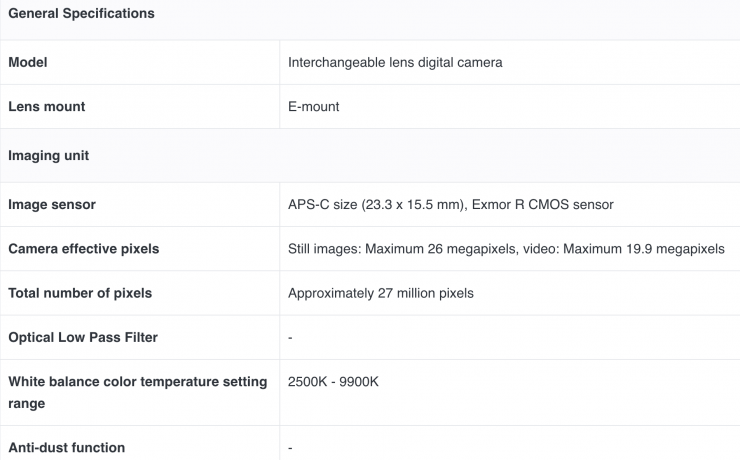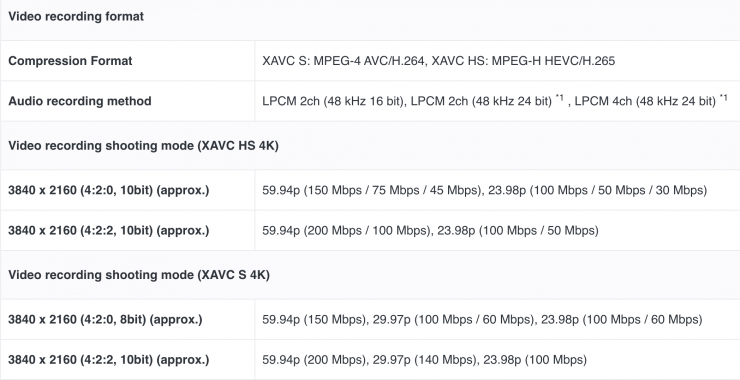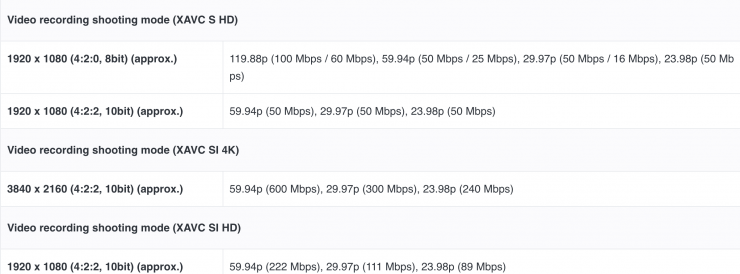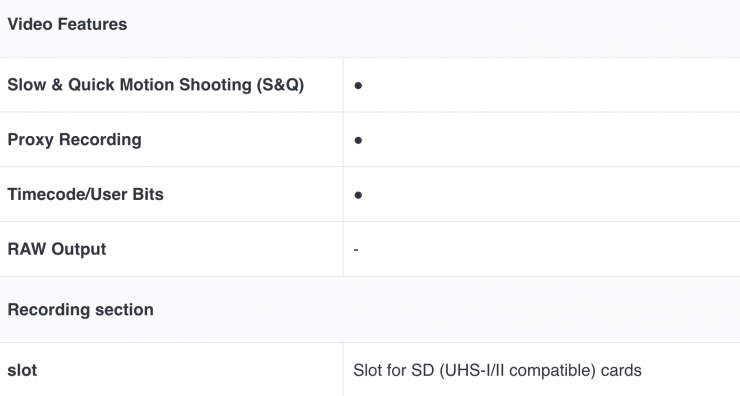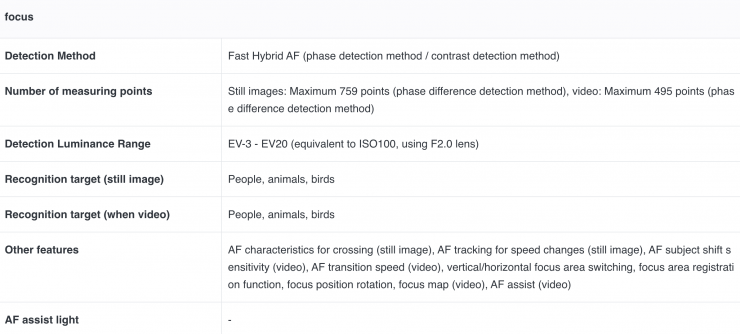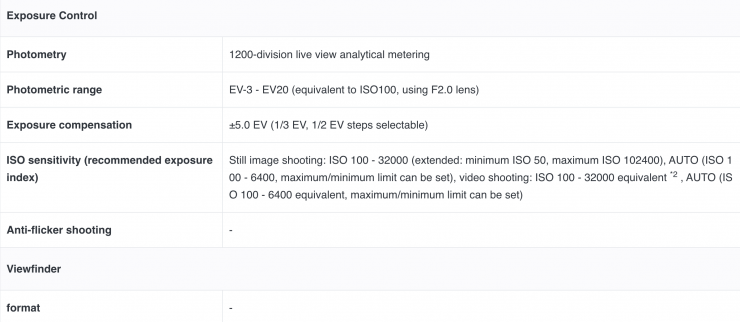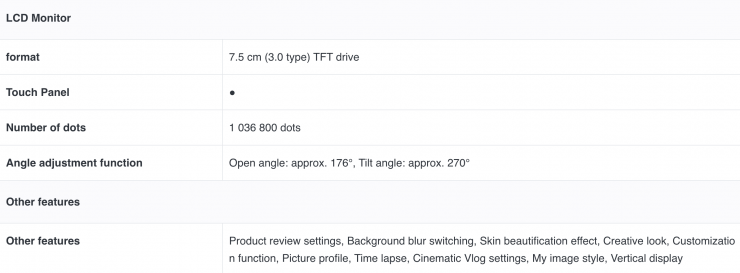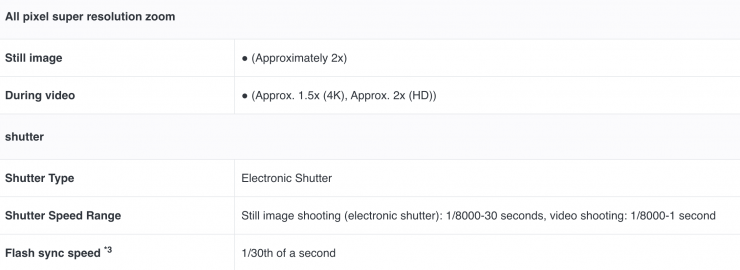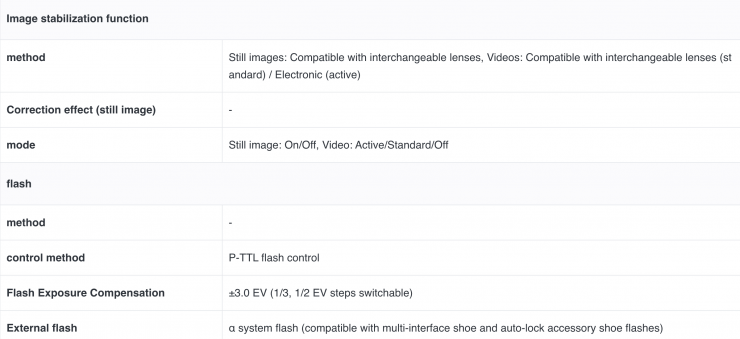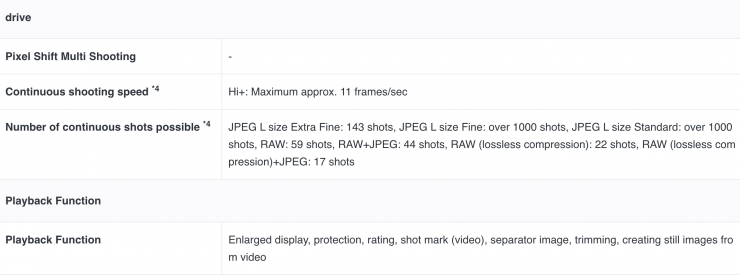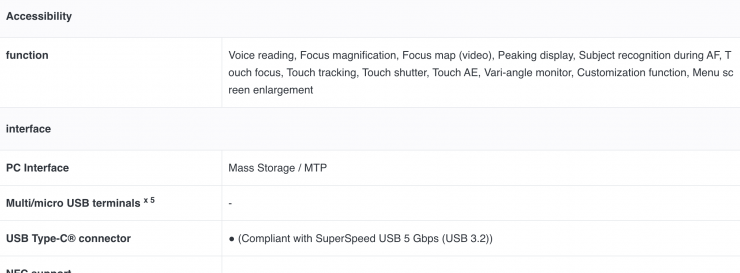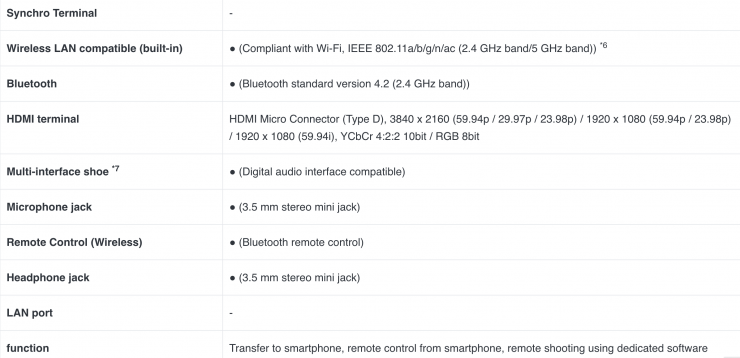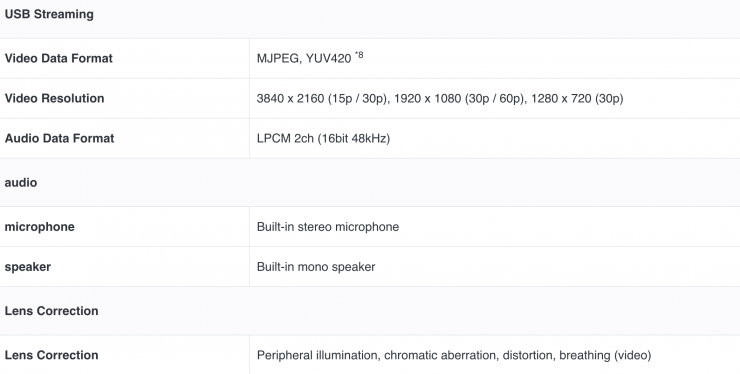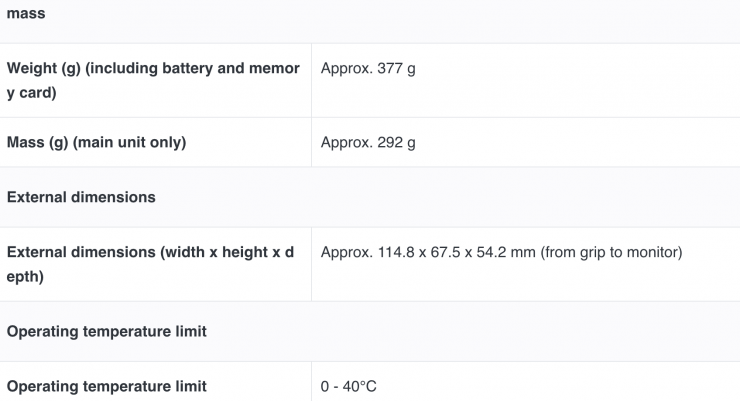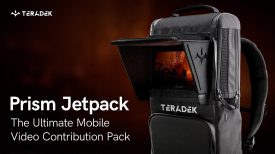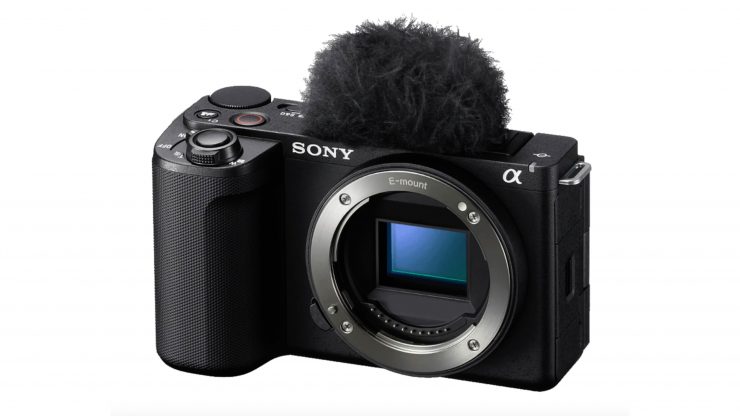
Sony has announced its new ZV-E10 II mirrorless hybrid. This is a follow-up to the ZV-E10 that was released in 2021. Just like the original, the ZV-E10 II is primarily targeted at bloggers and social media content creators.
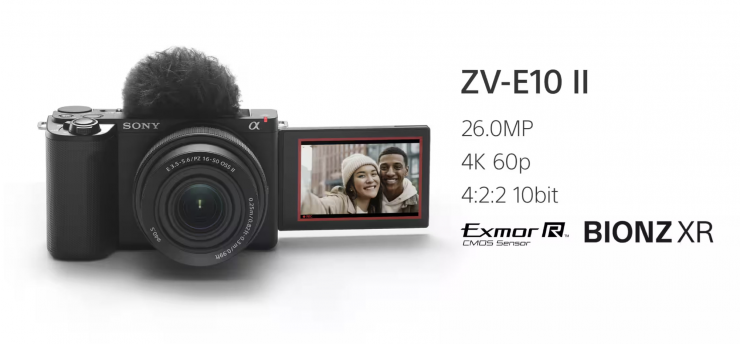
The ZV-E10 II features the exact same 26MP APS-C Exmor R CMOS Sensor same sensor that is found in the FX30 and a6700. Along with the camera, Sony has also announced the E PZ 16-50mm f/3.5-5.6 OSS II lens.
Key features
- 26MP APS-C Exmor R CMOS Sensor
- UHD 4K60p and Full HD 120p Video
- 3.0″ Touchscreen LCD, Vertical Support
- 759-Point Fast Hybrid Phase Detection
- Up to 11-fps Shooting, ISO 100-32000
- Real-Time Eye AF and Tracking
- Background Defocus, Product Showcase
- Focus Breathing Compensation
- Directional 3-Capsule Mic and Windscreen
- Headphone and Microphone Ports
Sensor
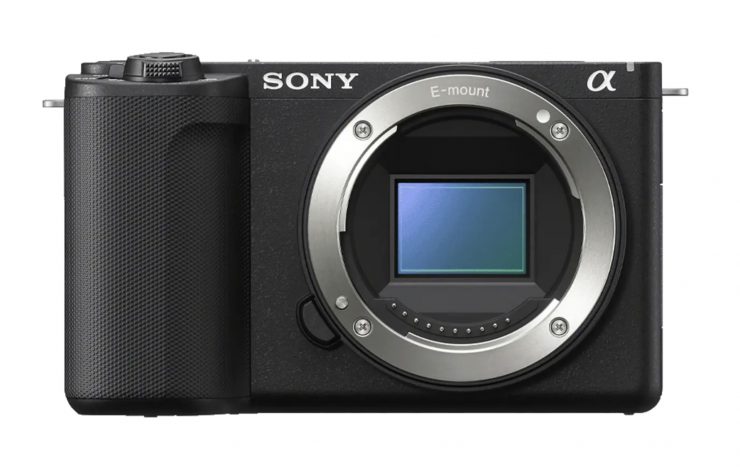
Just like the FX30 and the a6700, the ZV-E10 II uses a 3:2 APS-C 26-megapixel back-illuminated CMOS Exmor R 4K sensor. Now, that 26MP is only available when shooting stills. When shooting video in a 16:9 aspect ratio the effective megapixels being used is 20.1MP.
The sensor works in tandem with an upgraded BIONZ XR processor for 8x faster performance with an increased 5.6K oversampling area.
The ZV-E10 II is able to record UHD video (3840×2160) at up to 60p from an oversampled 6K image (5976×3356) with no pixel binning or line skipping.
If you want to record UHD at 100/120p then it does so with an additional 1.6x crop.
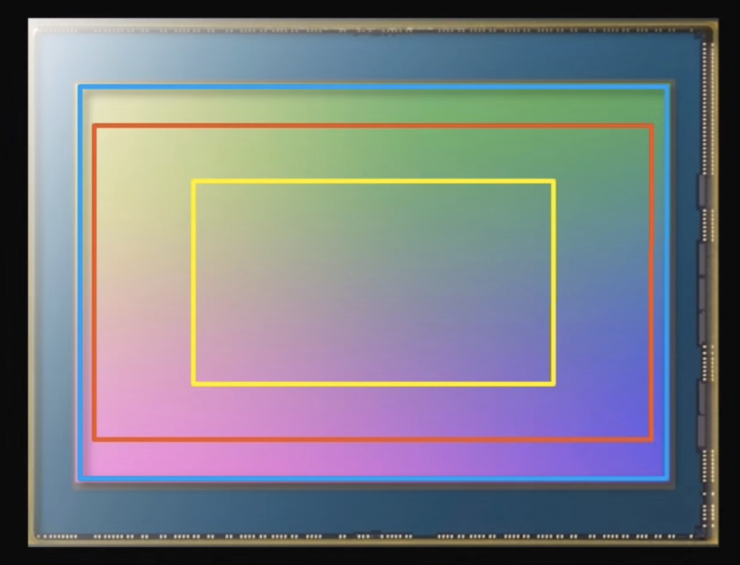
Above, the blue line indicates the 3:2 6192×4128 (26MP) still area. The orange line indicates the 16:9 UHD movie recording area when shooting up to 59.98p. The yellow lines indicate the UHD 100/120p crop area.
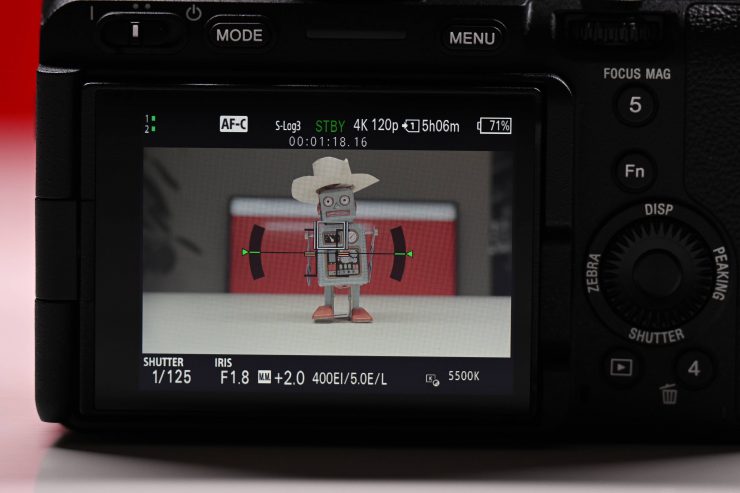

UHD 120p 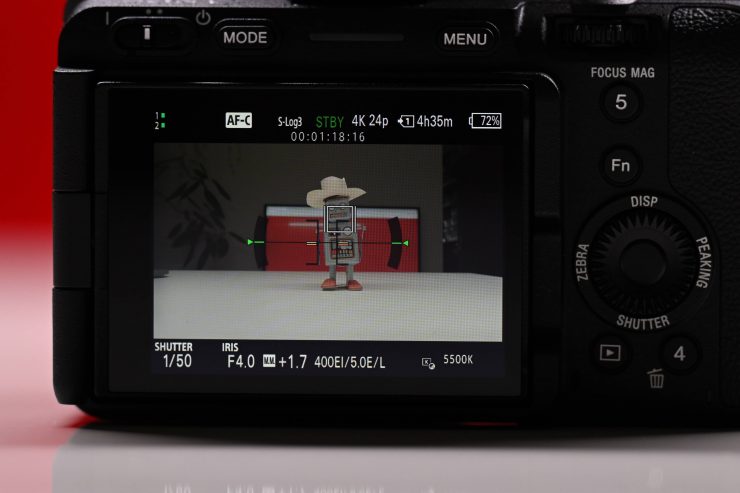
UHD 23.98p
Above you can see the difference in the crop you get when you want to shoot UHD 100/120p.

Above you can see the difference between a standard sensor (on the left), and a back-illuminated sensor on the right. Back-illuminated technology places the metal wiring of the photodiode beneath the diode instead of above it. Back-illuminated sensors offer increased sensitivity and less noise.
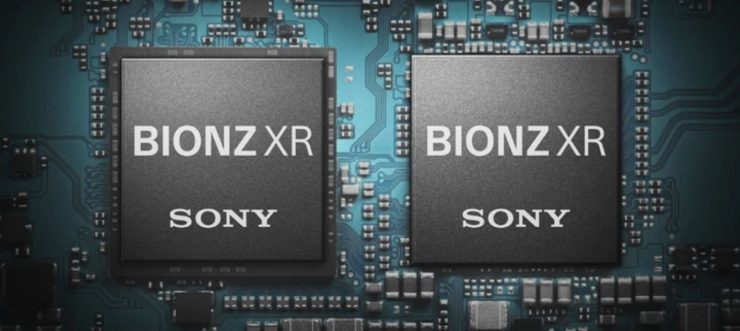
Just like the FX30, the ZV-E10 II utilizes the same BIONX XR image processor that is found in the a7S III, FX3, and FX6. The processor is claimed to be able to read the sensor 3x faster than the a7S II and 2x faster than most traditional mirrorless hybrid sensors. This processor is claimed to be 4x faster than the one that was used in the FS5.
Unlike the full-frame FX3 which has a low megapixel count, the ZV-E10 II has roughly 66% more pixels. Sony claims that sensor readout and rolling shutter performance should be good.
For anybody working in news, documentaries, or even events, having an APS-C sized sensor camera makes a lot of sense. You can use lighter, more affordable lenses that have a greater focal range than their full-frame counterparts. The ZV-E10 II could be a decent option as a backup camera that you could just keep in your kit, however, the FX30 is only $800 USD more.
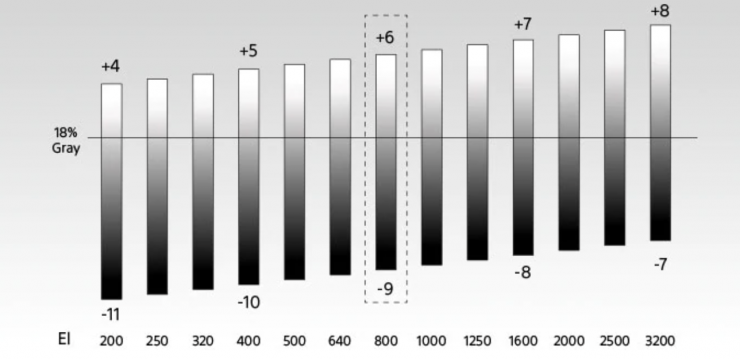
Sony claims 14+ stops of dynamic range from the FX30, so it should be the same for the ZV-E10 II.
The ZV-E10 II allows users to adjust the gamma, black level, knee, color level, and more. You can also use the same S-Log2 Gamma Curve that is found on Sony Cinema cameras, which squeezes up to 1300% more dynamic range into the video signal than traditional Rec. 709, for increased post-production flexibility. HLG (Hybrid Log-Gamma) support is also available, along with the BT.2020 color space, for recording within a wide color gamut and, in addition to S-Log2, S-Log3 is also available.
Video Recording
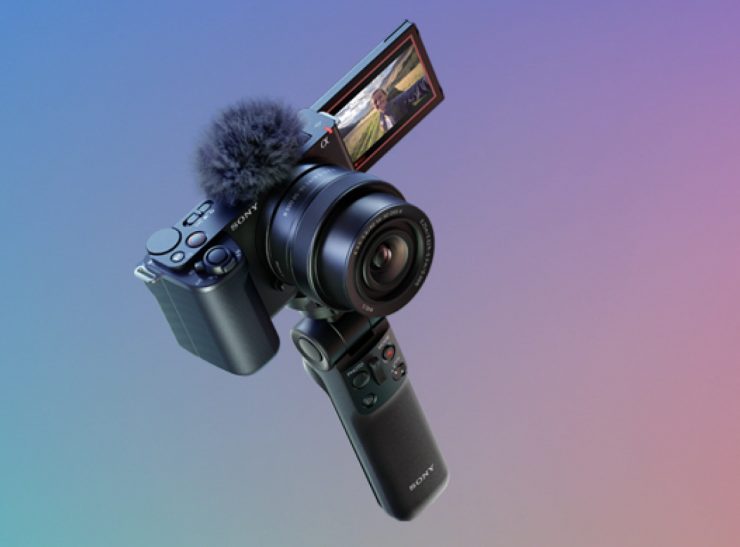
The ZV-E10 II can shoot UHD at up to 60p and HD at up to 120p, which is exactly the same as its predecessor.
UHD 4K video recording is possible up to 60p and uses full pixel readout with 5.6K oversampling, which according to Sony, yields greater detail with reduced moiré and aliasing. Full HD 1080p recording is also supported in frame rates up to 120 fps, and both resolutions utilize the 600 Mb/s XAVC HS and XAVC S-I formats with 4:2:2 sampling. The camera includes S-Cinetone and S-Log 3 color, which make for better grading control and full utilization of the 14-stop dynamic range. You can also assign LUTs or use the Creative Looks mode to apply preset color effects to your footage while shooting.
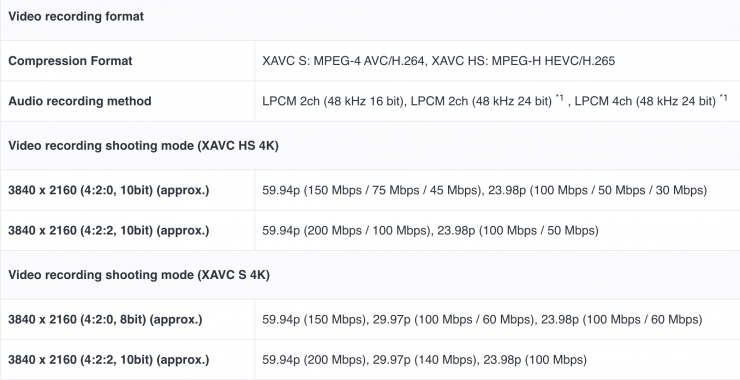
The camera’s predecessor could only record in XAVC S 4:2:0 8-bit between 60-100 Mb/s depending on what resolution you are capturing. It could also only output 4:2:2 8-bit over HDMI.
Equipped with S-Log3, which emphasizes gradation characteristics from shadows to midtones (18% gray). The color gamut also supports S-Gamut3, which improves the color reproduction of S-Gamut, and S-Gamut3.Cine, which is designed to be closer to data scanned from negative film. The combination of S-Gamut3.Cine, which is slightly wider than the digital cinema color gamut DCI-P3, and S-Log3 makes it easy to adjust colors in color grading targeting DCI-P3 or 709 video color space.
You can use five “Looks” such as S-Cinetone that enhances skin tones, or “Moods” that emphasize specific colors.
The Creative Look function makes it simple to create expressive moods for stills and movies in-camera, offering 10 presets that can be used as they are or customized. When shooting in the Intelligent Auto or Scene Selection mode, it allows the background bokeh, brightness, and color tone to be easily adjusted via icons on the touch screen.
Unlike a lot of other budget entry cameras, the ZV-E10 II doesn’t have a 29min 59sec recording limit.
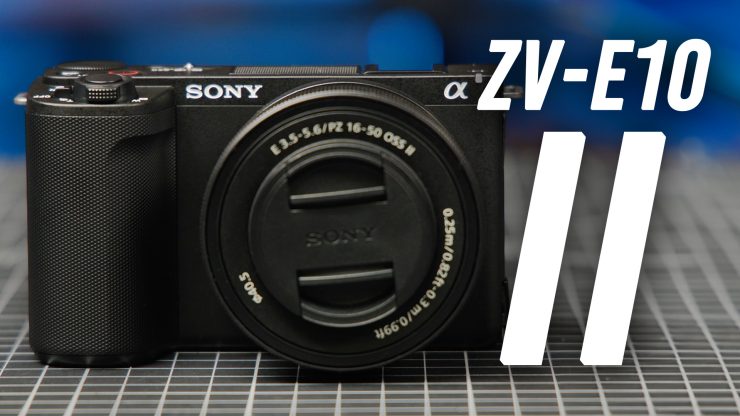
Active Mode electronic image stabilization employs a precision gyroscope and advanced algorithm to accurately measure and compensate for camera shake, providing highly effective stabilization without sacrificing mobility, even when shooting 4K. With compatible lenses, breathing compensation automatically adjusts for minor angle-of-view shifts when the lens focus changes, delivering distraction-free, rack focusing.
AF
Sony states the ZV-E10 II’s advanced AF (autofocus) technology provides fast, precise AF with excellent tracking performance. It utilizes a 759-Point Fast Hybrid Phase Detection system and there is Real-Time Eye AF and Tracking.
Similar to streaming platforms the ZV-E10 II has “Background Defocus” that can smoothly switch between a blurred and sharp background, as well as the “Product Showcase Setting” mode that allows the camera to automatically shift focus from the subject’s face to an object being highlighted.
Audio
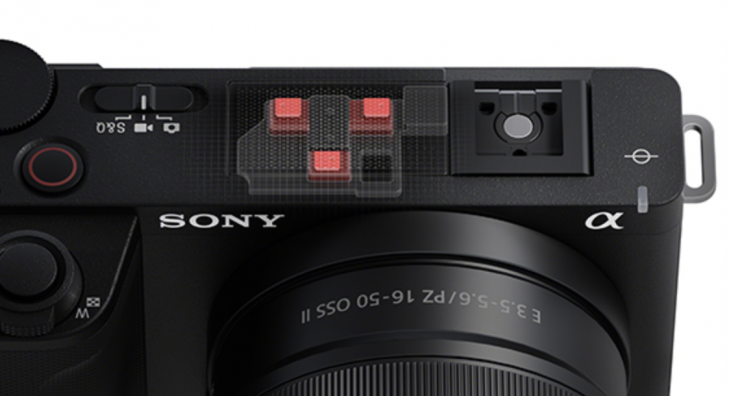
Since the ZV-E10 II is primarily for vlogging so audio is important. The camera includes an internal Directional 3-Capsule Mic, which is claimed to enable the ZV-E10 to capture clear sound recordings. It also comes with a windscreen to reduce wind noise. This looks to be the exact same microphone from the predecessor.
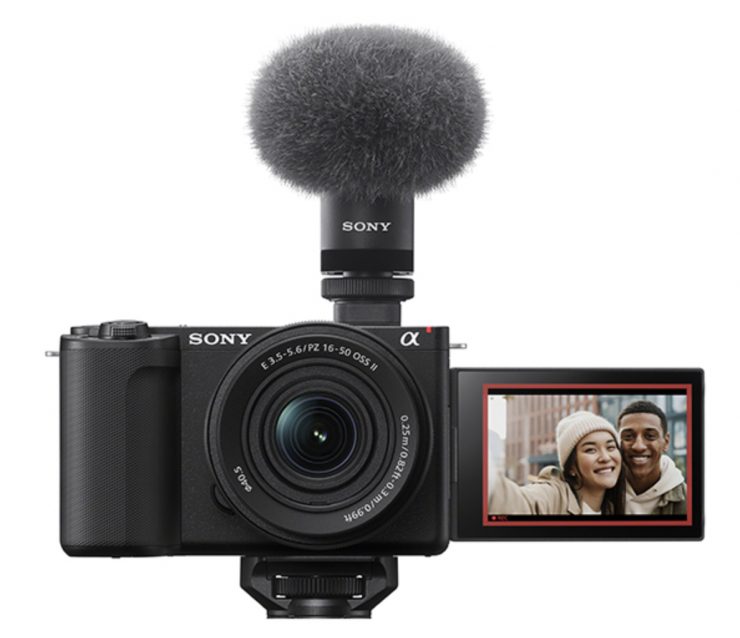
For external audio options, there are 3.5mm mic and headphone ports and the camera has Sony’s latest digital audio interface MI Shoe that supports working with shoe-mounted mics, like the ECM-M1, ECM-B1M, or the ECM-S1 Wireless Streaming Microphone System.
Size & Weight
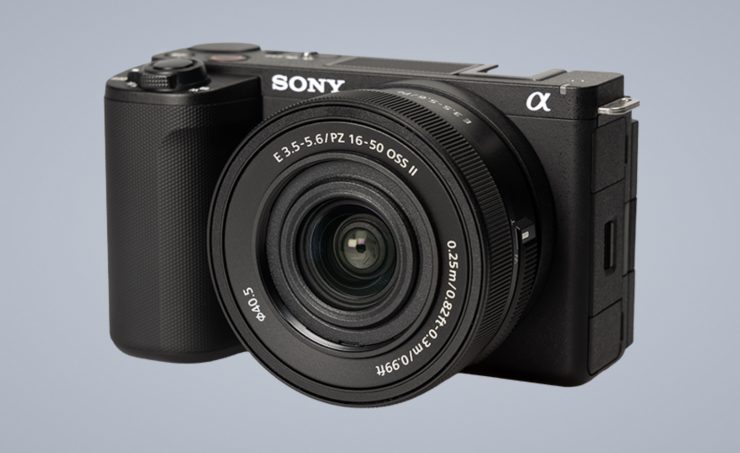
The ZV-E10 II is similar to its predecessor with one major difference: the new body now takes the larger capacity NP-FZ100 battery and is now rated to record approximately 610 shots per charge, compared to the 440 shots/charge of the original ZV-E10. This is roughly a 30% increase in available battery life and makes the camera much better situated to all-day recording. Making room for this larger battery, the camera has also gained a little bit of size and weight compared to its predecessor, now measuring 4.5 x 2.7 x 2.1” and weighing 13.3 oz / 368.5g with the battery and memory card.
As a comparison, the FX30 tips the scales at 562g (body only) / 19.82 oz. With a battery and memory card, it weighs 646g / 22.78 oz. The camera has physical dimensions of 129.7mm x 77.8mm x 84.5mm (L x H x W9.
Camera Body Design
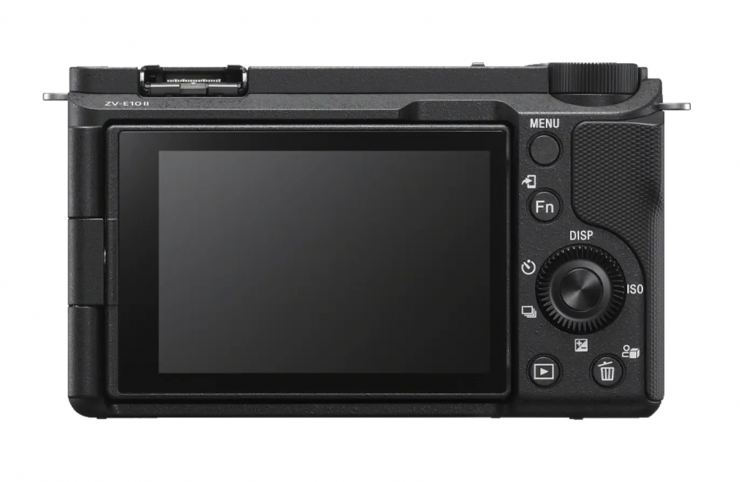
The camera was built for portable applications and one-handed use, the camera incorporates a large right-hand grip and an intuitive physical control layout. The grip design, along with the vari-angle LCD, also suits working from front-facing angles, such as when vlogging or taking selfies.

The integrated zoom lever surrounds the shutter button and works in conjunction with select Power Zoom lenses.
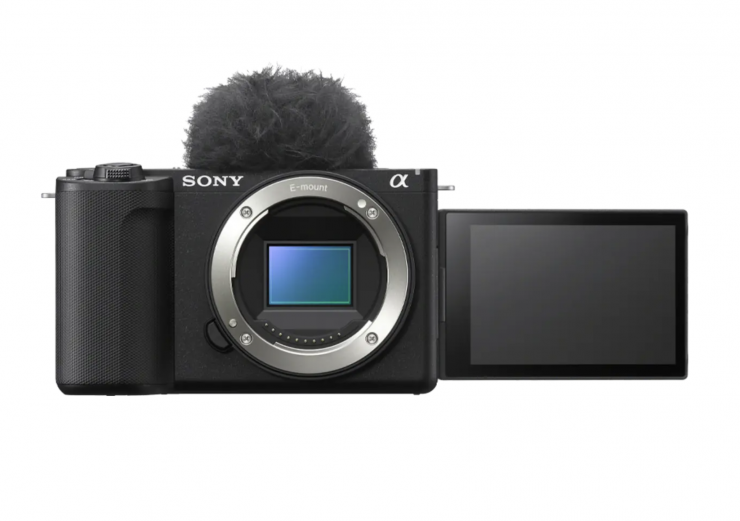
The vari-angle screen can be closed against the body, with the screen facing inward, to automatically power off the camera even when the power switch is set to ‘On’.
Dedicated Movie Record, Background Defocus, Product Showcase, and S&Q buttons provide direct access to common features used by bloggers
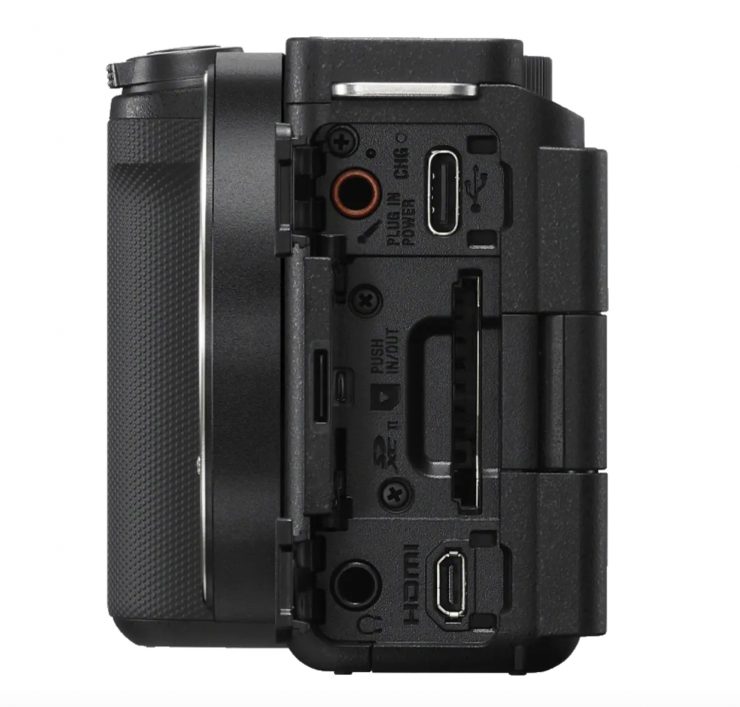
Some additional design elements of the ZV-E10 II include an improved 3” 1.04 m-dot vari-angle touchscreen LCD, which now supports vertical info display when shooting vertically; a USB-C port for in-camera battery charging; and it still has a single UHS-II SD memory card slot. For wireless transfer and control, there is 5Ghz Wi-Fi and the ZV-E10 II also supports RTMP, RTMPS, and SRT streaming protocols and UVC standards for webcam use.
Wireless & Sharing
Built-in Bluetooth and Wi-Fi connectivity enables instant transferring of imagery to mobile devices for direct sharing online to social networking, via email, and to cloud storage sites. Once connected, the linked mobile device can also display a live view image on its screen and, using Smart Remote Control, remotely control the camera’s shutter release.
The ZV-E10 II is also compatible with the Movie Edit add-on from the Imaging Edge mobile app.
Bluetooth connectivity enables connecting to the optional GP-VPT2BT Wireless Shooting Grip for efficient camera control.
Live Streaming
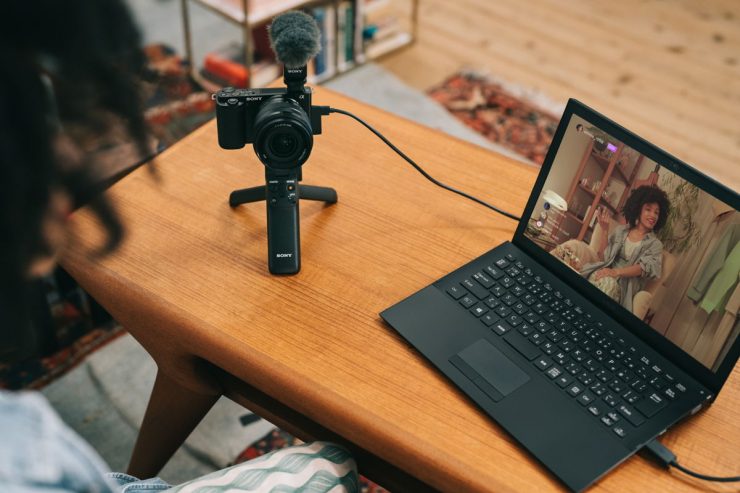
The ZV-E10 II supports standards used for USB cameras like UVC (USB Video Class) / UAC (USB Audio Class). The ZV-E10 II also allows users to connect to a power supply via USB cable while live streaming for longer usage. For added convenience, the user can assign this function to a custom button to start streaming instantly.
Price & Availability
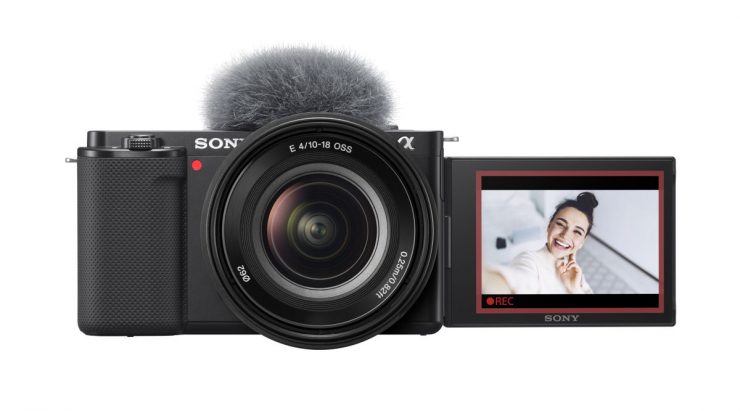
The new ZV-E10 II will be available in black and white at the end of August for $998, which makes it almost $300 USD more than its predecessor, which cost $700.00 USD at launch.
A kit featuring the ZV-E10 II camera and the E PZ 16-50mm f/3.5-5.6 OSS II Lens will also be available at the end of August for $1,098 USD.
You can also buy the E PZ 16-50mm f/3.5-5.6 OSS II Lens separately for $298 USD.
Thoughts
There is actually a lot to like considering this is a sub $1,000 USD camera. You actually get a lot of what the FX30 offers for $800 USD less.
Full Specifications
